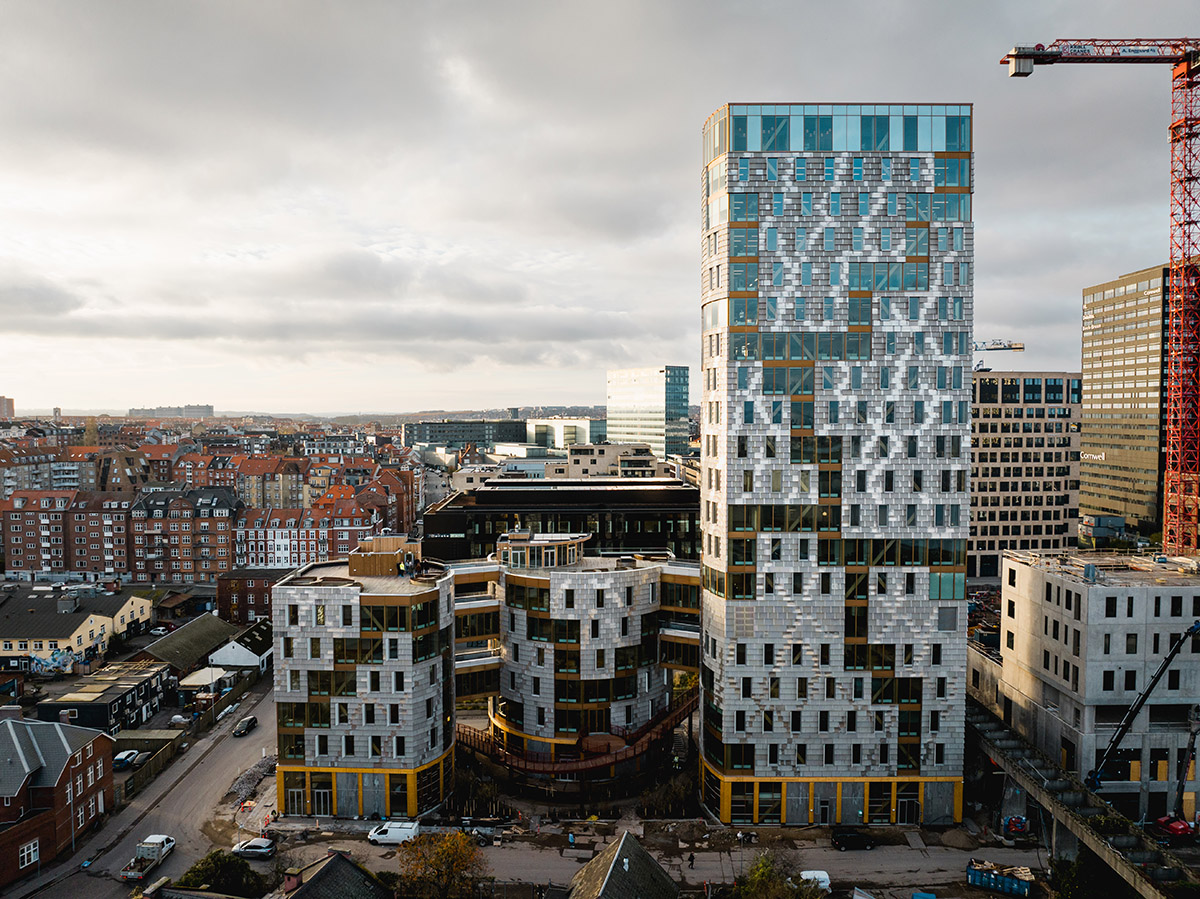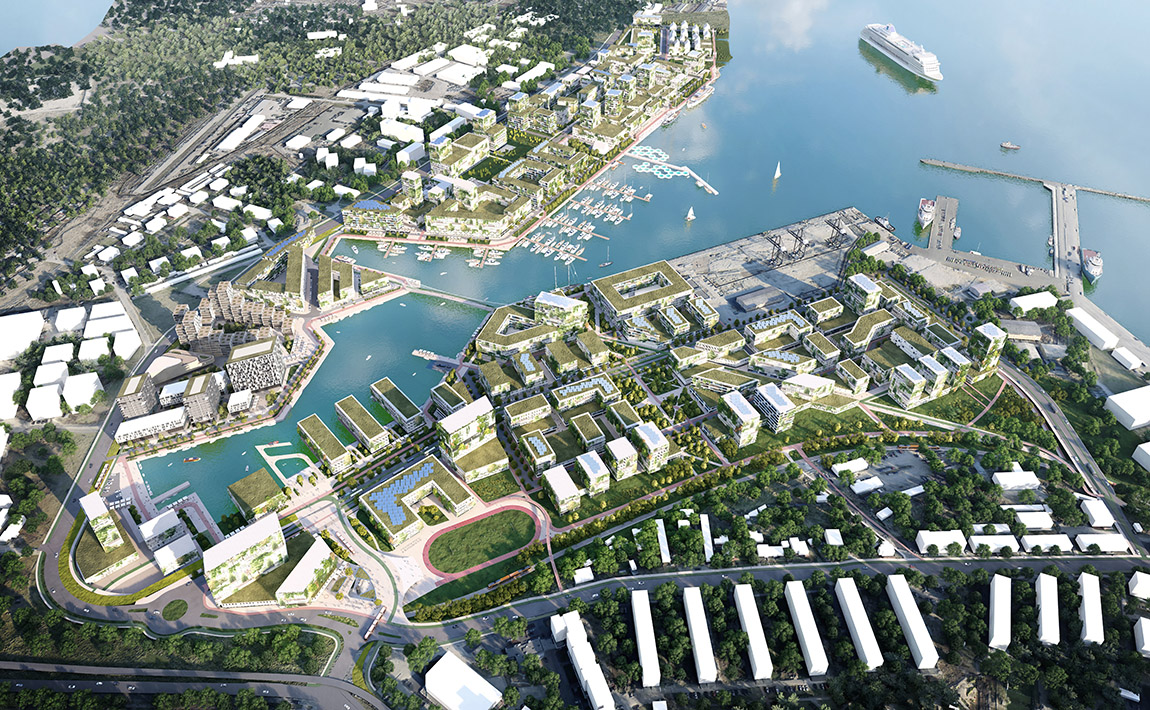Green city-building: Architect Henry Glogau on innovation in Copenhagen
By Miriam Gradel
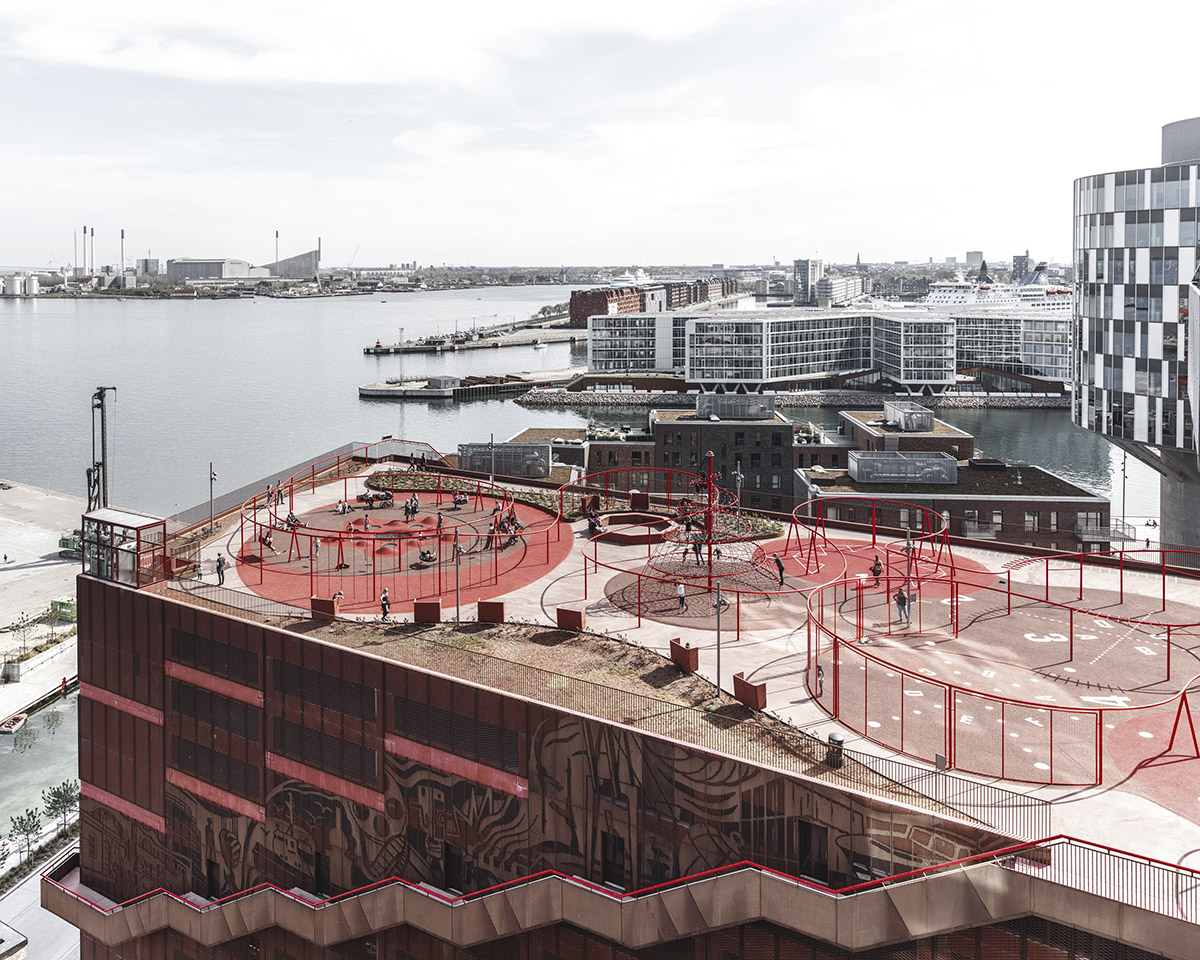
Konditaget Lüders is a car parking facility doubling up as a public leisure space via the outdoor playground and exercise space on the rooftop. According to JAJA Architects, the firm behind the construction, says that “car parks of the future should contribute to life in the city.” Photo: Rasmus Hjortshøj - COAST Studio
As summer sweeps across the Nordics, Copenhagen is getting ready to welcome a global audience of designers, architects and urban environment experts. The Danish capital has been awarded the title of World Capital of Architecture in 2023 and, according to architect and winner of the 2021 Lexus Design Awards, Henry Glogau, when it comes to architecture, this small country has a lot of sway.
This summer, Copenhagen will become a major stage for architecture, hosting numerous talks, exhibitions and installations as part of two distinct festivals: The Copenhagen Architecture Festival and the UIA World Congress of Architects. Common to both is a sharp focus on examining the role of architects in shaping the future of urban living, and how architecture and urban design contribute to meeting the 17 United Nations Sustainable Development Goals.
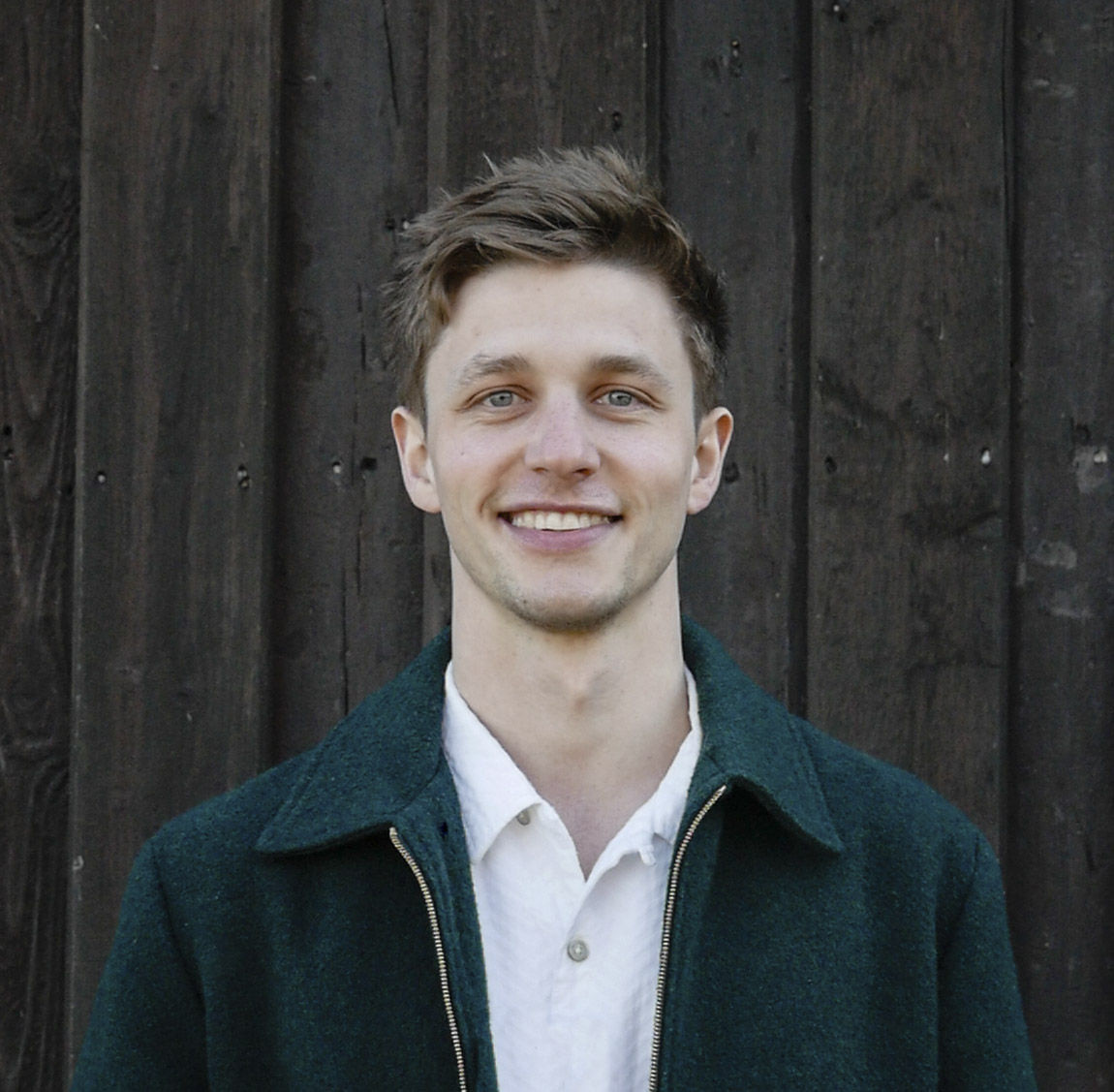
Henry Glogau, 27, is an award-winning architect currently working for 3XN/GXN, a Danish architecture firm with offices around the world that combines research and design thinking in its projects. Photo: Henry Glogau
The built environment, which accounts for roughly 39 per cent of global energy-related carbon emissions according to the World Green Building Council, is vital to the success of the Paris Agreement goal of halving emissions by 2030.
But in spite of growing political and financial support for energy efficient construction, CO2 emissions from building operations reached an all-time high in 2022, according to the United Nations Environment Programme (UNEP), and the path towards actionable solutions remains paved with little more than good intentions.
In step with the rapid population rise, the planet’s surface is becoming increasingly urbanised. Yet, as hybrid work and a lack of affordable housing drive community activities from the city centre to the suburban residential neighbourhoods, the pull of the city and its high-rise buildings is fading. This begs the question: how should cities reinvent themselves in the digital age?
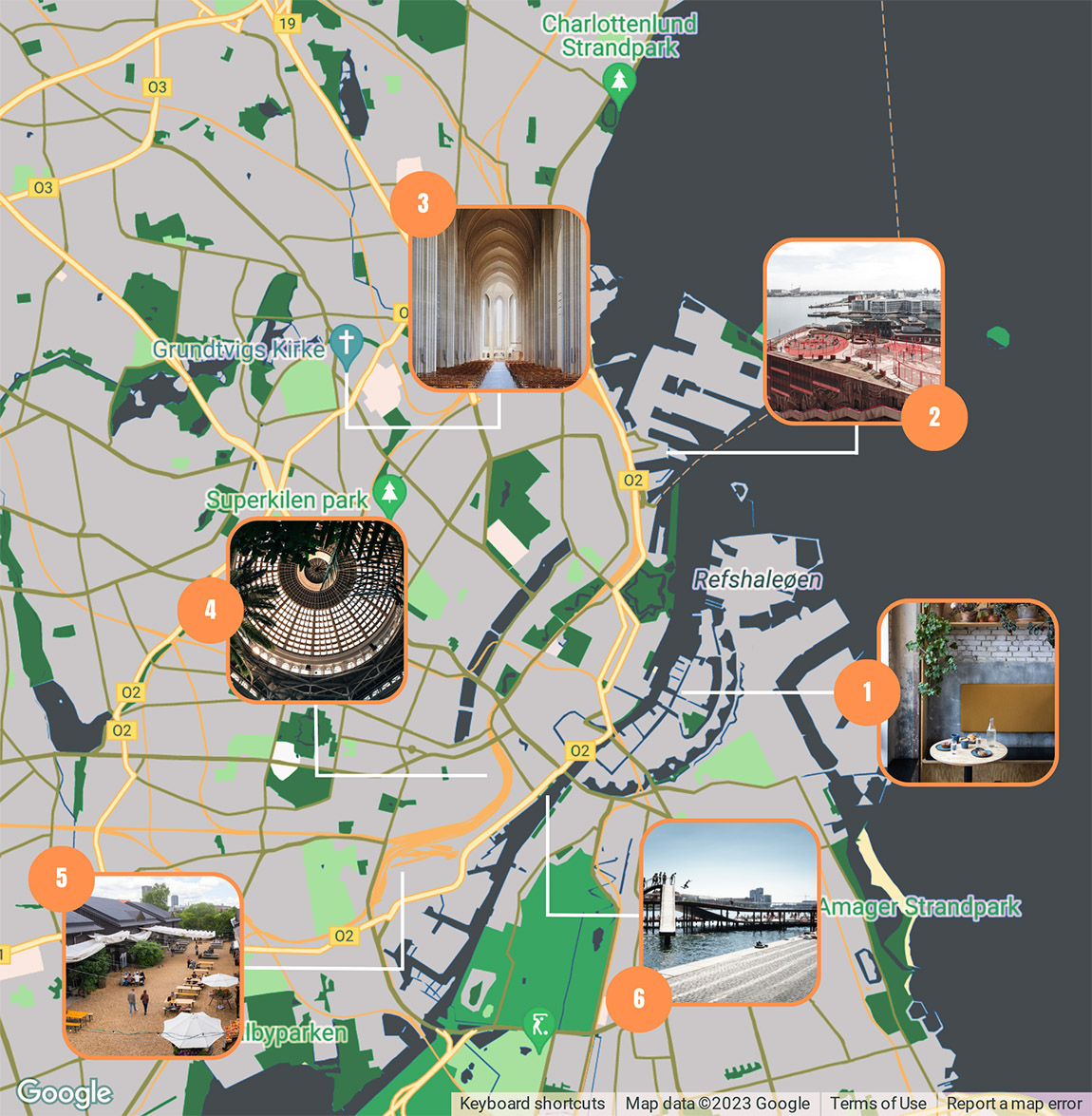
Copenhagen – an architect’s must-see sights
1. Hart Bageri, Holmen. Photo: Michael Gardenia via Visit Copenhagen
2. Konditaget Lüders. Photo: Ramsus Hjortsjø, COAST studio via Visit Copenhagen
3. Grundtvigs Kirke. Photo: Kirill Zakharov via Unsplash
4. Ny Carlsberg Glyptoteket. Photo: Kevin Angelsøe via Unsplash
5. Banegaarden. Photo: Daniel Rasmussen via Visit Copenhagen
6. Kalvebod Bølge. Photo: Wikimedia Commons
In nearly five decades, Copenhagen has transformed itself into one of the world’s most liveable cities, and has become a driver of the global conversation on sustainable architecture. From conceptualising international icons like the Sydney Opera House, to making Times Square in New York fully pedestrian, Danish names like Utzon, Jacobsen and Gehl have paved the way in sustainable urban innovations around the world.
In this time of climate emergency, the emphasis on local materials and functionality at the centre of Danish design tradition, coupled with the country’s ambitious goal of becoming the world’s first climate-neutral nation are resonating with the new generation of architects tasked with (re)building the future.
Henry Glogau, 27, is one such architect. Five years ago, he moved from New Zealand to Denmark to study a Masters in Architecture and Extreme Environments at the Royal Danish Academy in Copenhagen, a unique degree aimed at making a positive impact by responding to present and future global challenges. His Portable Solar Distiller, a low-tech solution that purifies water through solar energy, won him the Lexus Design Award in 2021, and the Young Talent Award at the 2022 Danish Design Awards. “From an educational point of view, Denmark is highly progressive,” says Glogau, adding that moving to Denmark has been pivotal in shaping his thinking around architecture. “In New Zealand, we have an appreciation for connecting with nature, but perhaps we don’t see the city dynamics in the same way,” he says.
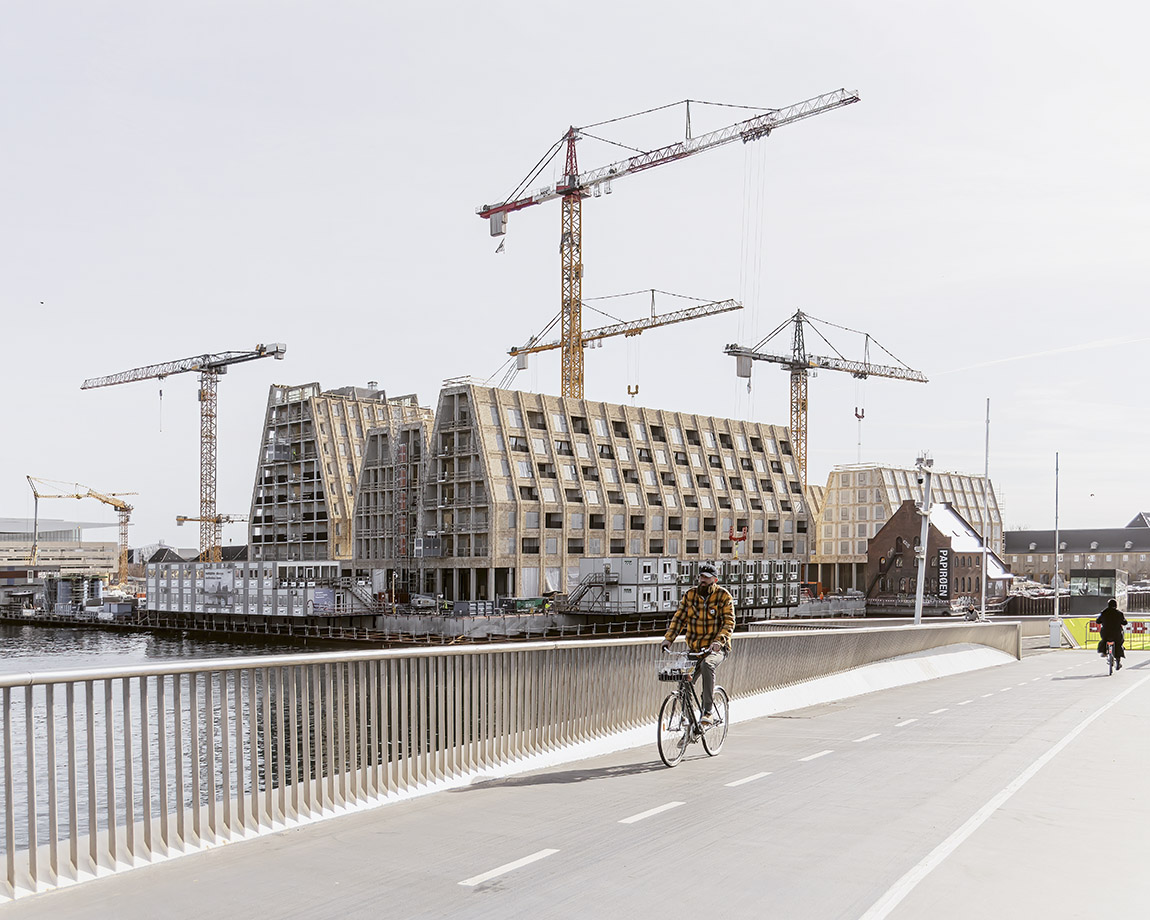
The latest grand addition to Copenhagen’s waterfront is the Paper Island construction by COBE architects. Constructed as an artificial island at the heart of Copenhagen’s harbour, the island has housed a series of important functions for the city for more than 300 years: from shipyard, to military hospital, to arsenal, to warehouses for coal and paper. Most Copenhageners remember the paper warehouses, and it is these that have provided the island with its name today. Photo: Paper Island, COBE
Coming from New Zealand’s relatively new cityscapes, what blew Glogau’s mind was more than just seeing a city with hundreds of years of preserved architectural history. “There is an element of experimentation and a willingness to challenge conventions,” he says. One of Glogau’s preferred urban spaces that showcases this is Glyptoteket, a museum and research institution that houses the private collection of brewer and philanthropist, Carl Jacobsen (1842-1914). “It is nice to see how progression merges into the museum space,” says Glogau.
Intended as a daytime museum, Glyptoteket’s original design aimed to capture the natural light and create an all-year art escape for city dwellers. The Winter Garden at the heart of the museum, a domed greenhouse atrium filled with palm trees and housing a small cafe, is covered in honey-coloured glass that creates a warm glow. In 1906, a classical-inspired extension was added to house sculptures and, in 1996, the Henning Larsen building and rooftop was added to welcome modern paintings to the collection. As Glogau puts it, Glyptoteket exhibits “three distinct styles harmonising with each other.”
Rather than just being destinations for work, cities that can combine unique social amenities with excellent residential options will be the most successful in the long term. “We are seeing that the work and thinking in Copenhagen is an attractive model for these larger cities to consult,” says Glogau. “They are interested in what makes a Danish working environment and understanding how big cities can have much more diversity, which comes down to health and wellbeing and having liveable and loveable spaces.”
Simultaneously, smaller-scale design practices are being adopted by larger institutions and governments via legislation, education and research. Denmark’s sustainable approach includes a focus on mobility and connectivity – both in terms of transport and in terms of connecting citizens with the city and surrounding nature. Emphasis is on creating “moments of intimacy” explains Glogau, as well as “the flexibility of public spaces and how they can adapt and change to the programmatic needs of the city dwellers.”
This is what makes Copenhagen rich in diverse, multipurpose spaces. As Glogau puts it, “it’s about giving the community a lease on life in the city.” One of Glogau’s favourite examples of this is Kalvebod Bølge, or Kalvebod Wave, a year-round harbour bath and waterfront extension that brings citizens closer to the water through wavy and bendy surfaces. During the summer period, the platform is lively with DJs, street food vendors and citizens tanning in the sun. As one Tripadvisor reviewer puts it, “summer at Kalvebod Bølge is all you need to fall in love with Copenhagen.”
“I am a big believer in looking to nature for inspiration, and that is something you see here in Denmark,” says Glogau. Though there might be more room for ideas in Denmark, the space for innovation still has certain limits. “There is a lot of demolition and deconstruction of social housing projects, and it’s increasing the carbon footprint of the city hugely,” says Glogau. Arguably, turning trash into treasure is an area where Denmark could do more. According to Glogau, “this is an opportunity for Denmark to be at the forefront of retaining and upcycling architecture with the smallest footprint possible.”
The upcoming festivals, however, might provide the platform for Denmark to seize the opportunity. As Glogau puts it, “with these types of events, we can critique, have open discussions and expand local learnings globally.” In addition, visitors to Copenhagen during this period will be able to enjoy walking tours of the city, join hands-on exhibitions and enjoy the city as it comes alive in the summer months.

View of Lille Langebro, a bicycle and pedestrian bridge that opens up when boats and small ships pass through the canal. Photo: Daniel Rasmussen
Henry Glogau’s highlights at the World Congress on Architecture, 2-6 July:
Sessions:
Behavioural Design As The Key To The Green Transition
Architecture And Health In Low Income Countries
Indigenous Views On Sustainable Design From Around The Planet
Interactive Session: Turning Waste To Architecture
Pavillions to visit:
Living Places Copenhagen
(P)recast
Subscribe to Our Newsletter
Receive our monthly newsletter by email

